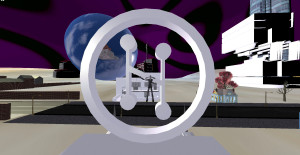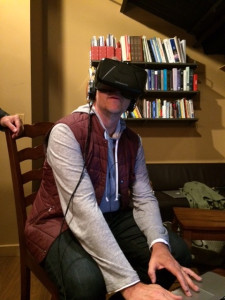Virtual Reality: A Place for Us All
By Tony Conrad, September 19, 2014
A piece published in April in the MIT Technology Review discussed the Oculus Rift and its many, many applications beyond video games—teleconferencing, online shopping, movies and more. But Philip Rosedale, Founder of True portfolio company High Fidelity, thinks that the world of virtual reality will be even bigger, changing the way we experience our everyday lives—our social interactions, our communities and our work. I had the good fortune of sitting down with Philip a few weeks ago to discuss his thoughts (and try the Oculus Rift under his expert tutelage). Below, Philip’s vision for the virtual reality revolution, and how High Fidelity plans to lead it:
In the 90’s, no one understood that human life was about to be irreversibly transformed by the Internet. Most of us were just thinking, “this thing could be as big as CD-ROMs!” But of course the Internet revolution happened, and it was so much bigger than anyone realized it would be, and everything changed.
Virtual reality is the next revolutionary phenomenon. It is our collective future. All the gamers who can’t wait to play Madden on the Oculus, or the movie directors creating movies specifically for Oculus immersion are starting to understand the possibilities of virtual reality, but there is so much more to explore. Yes, there are going to be games, video playback and immersive experiences, which will be incredibly cool and mind-bending. But at some point, after we’ve been wearing this thing for 48 hours, we’re going to take it off and say, “Where did all the people go? Where are my friends? What else can happen in this alternate universe? How can I work there? Can I make money there? What can I do there?” These are the questions High Fidelity is trying to answer.
We believe the real revolution is in replacing, augmenting and extending the experiences of our lives using devices like the Oculus Rift. Here are four reasons why we believe this is not only possible, but imminent:
- One-on-one interaction with people is actually going to work there. Sound travels one foot per millisecond—that’s why, in face-to-face interaction, we feel intimately here with each other. Our mobile phones operate about 500 milliseconds apart; when you actually try talking to someone on a phone when they are in the same room as you, you realize how disconnected you feel with that latency. At High Fidelity, we are obsessed with getting these communication delays out—we believe we can take the delay to 100 milliseconds or less, enabling true, present, one-on-one interaction with someone, regardless of where you both are.
- Many things in the real world will be replaceable in a better and more economical format in virtual reality. Think about how ecommerce affected books and music—these and other commerce categories have gone beyond brick and mortar and now function even better on the Internet. Virtual reality will have the same affect on our everyday experiences. Take work. If something (other than fun) would require you to fly to New York and you could easily participate via virtual reality, you would. Many things across many categories will be doable with VR.
- VR is where the robots will live. Think about the movie “Her.” Why did the virtual assistant work so well? Where did she live? We know she was still incredibly busy while her “boss” was asleep, so where was that all happening? As we begin to work with more and more complex autonomous agents and artificial intelligence, we will see new types of interactions, which will happen in the virtual world because it doesn’t cost anything to be there. Societal interactions with machines are going to happen in virtual worlds. Your robot personal assistant will be a lot like the film “Her;” you’ll probably put the Oculus on and interact with him/her on a screen.
- VR creates the ability to have experiences that would be too risky in real life. Currently, you might watch boxing or car racing and wonder what that would be like, but you know you aren’t going to do it. With virtual reality, you can experience things that are cost prohibitive, geographically prohibitive or even dangerous and really feel like you’re doing it. The sensory experience is identical, which opens up entire new worlds of human existence.
As we begin the journey to the virtual reality revolution (and we are just beginning), two things become incredibly important to its success. First, interactions between people need to be identical to “real life.” Your avatar needs to be you, and your one-on-one communication shouldn’t have any delays. Second, people need to be able to create and publish their own virtual worlds and interact seamlessly within others’ worlds. We need a system that makes it simple for people to create their own worlds along with a peer-to-peer network for existing in them. These are just a few of the things High Fidelity is working on. Ultimately, our goal is the democratization of virtual reality. We believe that—as with the Internet—our lives are once again about to be irreversibly changed, and the revolution should be created by us all.
–Philip Rosedale



